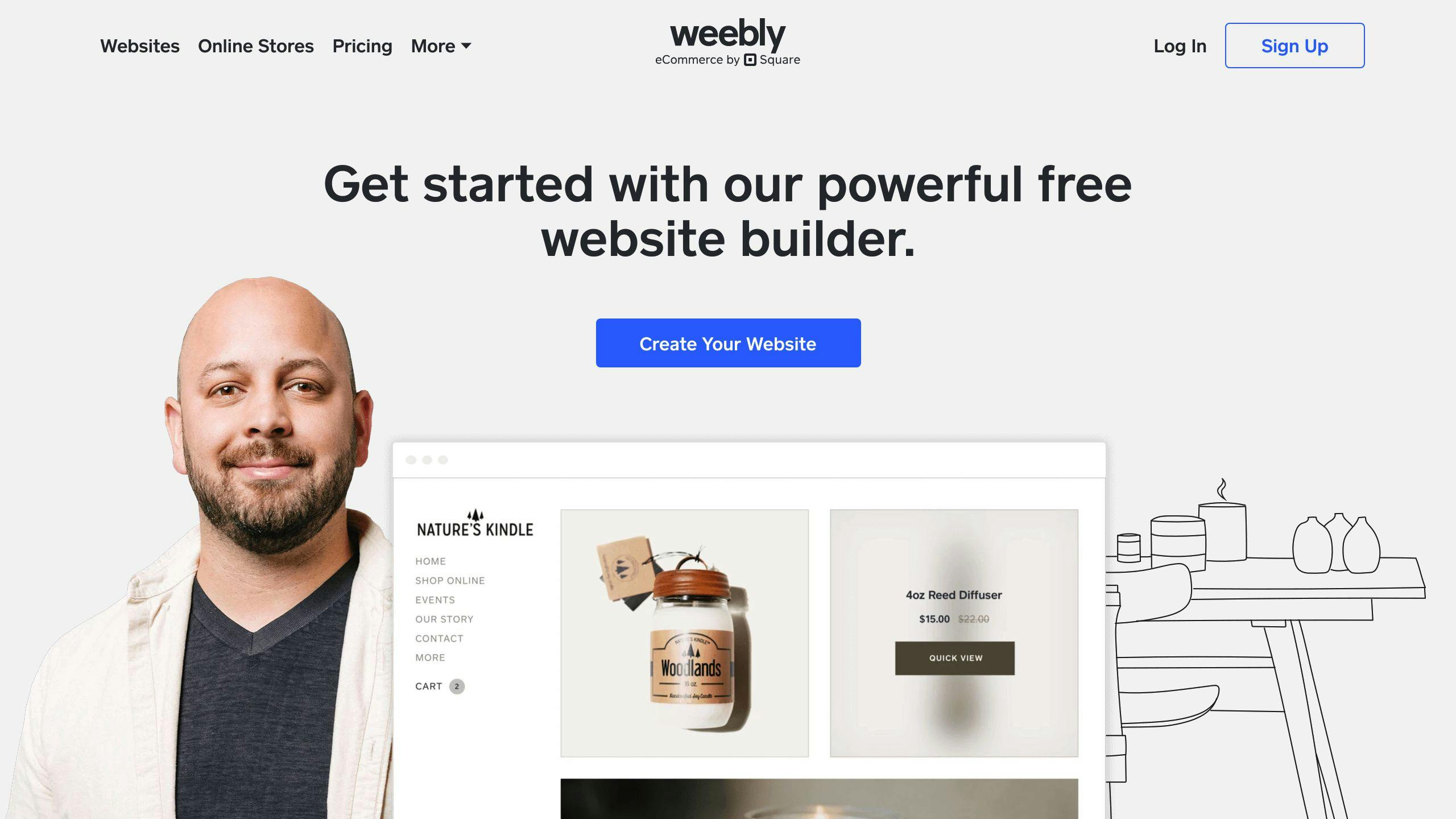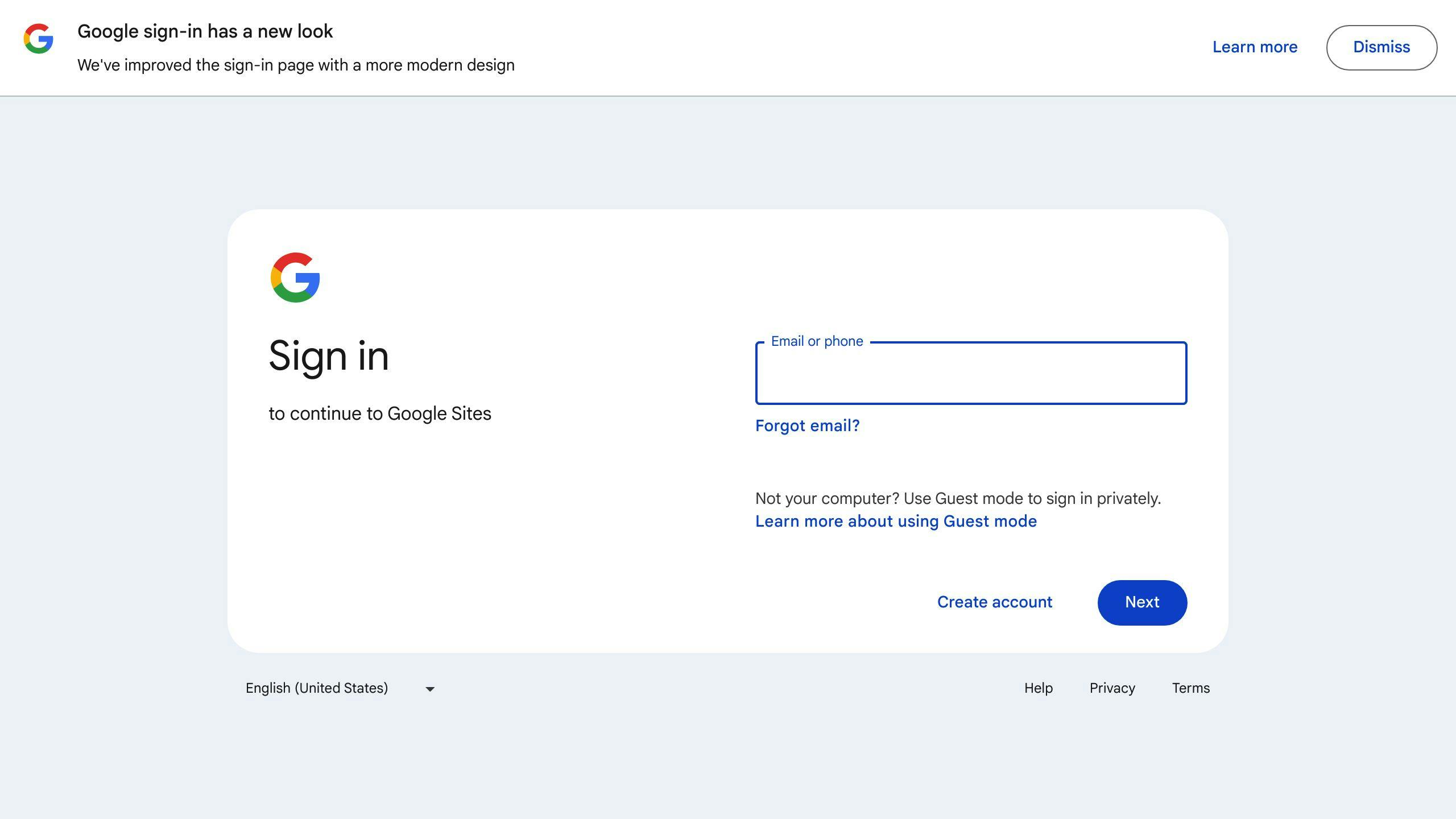Choosing the right freemium website builder can be the first step towards creating a successful online presence without initial costs. Freemium models offer a basic service for free with the option to upgrade for advanced features. Here's a quick guide to help you decide:
- Ease of Use: Platforms like Wix and Webflow allow drag-and-drop functionalities making website building accessible for everyone.
- Customization: Upgrading can unlock more customization options in platforms such as Wix and Webnode.
- Scalability: Shopify and Webflow are suited for growing websites, offering options for expansion.
- Mobile Optimization: Squarespace ensures your site is mobile-friendly.
- Security: Wix is known for robust security measures.
Whether you're a beginner, a small business, or looking to showcase your portfolio, there's a freemium website builder tailored to your needs. This guide explores popular options like Wix, Shopify, Squarespace, Weebly, and Google Sites, highlighting their pros, cons, and ideal use cases to help you make an informed decision.
What is Freemium?
Freemium is like a sample taste. You get the basic stuff for making a website without paying anything. But, if you want the fancy features, you need to start paying. This setup is pretty common with website builders today. Here’s the deal:
- You can start building your website for free, but you’ll hit some limits.
- Want more designs, space, faster loading, or your own website name (custom domain)? That’s when you upgrade to a paid plan.
- The goal is to get you hooked on the free version and then nudge you to buy the full deal.
So, freemium website builders are a starter pack for websites, with a pay-up option for the cool extras.
Advantages of Freemium Website Builders
Here’s why people like these free-to-start website builders:
- Easy to start: No need to spend money right away. Great for people just trying things out, like small businesses or bloggers.
- Try before you buy: You can play around with the builder and see if it fits what you need without opening your wallet.
- Grow as you go: Start small and pay for more features as your site gets bigger. Perfect for growing your online presence slowly.
- No big loss: If you decide you don’t need the fancy features, no harm done. You didn’t pay for them anyway.
Limitations of Freemium Website Builders
But, it’s not all perfect. Here are some drawbacks:
- Less control and choices: The free version might not let you do everything you want. You might get stuck with basic designs or not enough space.
- They really want you to pay: Sometimes, it feels like you’re being pushed to buy the paid plan because the best features are locked behind it.
- No personal website name: With the free plan, you usually can’t use your own domain name. Instead, you get a subdomain that includes the builder’s name, which isn’t as professional.
- Ads on your site: Free sites often show ads. They’re not too bad, but they can make your site look less clean and professional.
While starting for free is great, be ready to spend some money if you want your website to stand out or need more power behind it.
Key Features to Look for in Freemium Website Builders
When you're picking a freemium website builder, there are a few important things to keep in mind. These things can help you figure out if the builder is right for you now and as your website grows. Here’s what to look for:
Ease of Use
Go for a website builder that's easy to use. It should let you move things around and change your site without needing to know how to code. Builders like Wix, Webflow, and Squarespace are great because they're simple for beginners.
Customization Options
Free plans usually don't let you change much, but paying a little can open up a lot of options. Look for builders that let you play around with different looks and styles. Wix and Webnode are good examples where you can do more if you upgrade.
SEO Tools
SEO means making your site easy for Google to find and understand. You want to be able to add keywords and descriptions, change picture texts, and make sure your site loads quickly. Weebly, Webflow, and Wix are good at helping with SEO.
Value of Free Plans
Think about what you get for free. How much space do you have? Can you use your own website name? Will there be ads? Some builders, like Wix and Webflow, give you a lot for free, while others might make you want to upgrade sooner.
By looking at these things, you can pick the best freemium website builder for your needs. Focus on how easy it is to use, what you can change, how it helps with SEO, and what you get for free.
Comprehensive Reviews of Popular Freemium Website Builders
Wix

Wix is super easy to use with its drag-and-drop setup and offers a lot for free. Here's what to know:
Pros
- Simple for anyone to use
- Lots of ways to make your site look unique
- Tools to help people find your site on Google
Cons
- The free version has some limits
- Learning all the fancy features might take a bit
Ideal Use Cases
- Small businesses
- Online shops
- Showcasing work
- Writing a blog
| Feature | Details |
|---|---|
| Ease of Use | Drag and drop, no coding needed |
| Customization | Lots of design choices |
| SEO Tools | Helps your site show up in Google searches |
| Free Plan Value | Great free option with lots of features |
Shopify

Shopify makes it easy to start selling online, but you'll need to pay for the best features.
Pros
- Set up your store fast
- Many design themes to choose from
Cons
- Not much offered for free
- Pay extra for better Google search tools
Ideal Use Cases
- Selling products online
- Small online shops
| Feature | Details |
|---|---|
| Ease of Use | Quick to set up |
| Customization | Pick from different themes |
| SEO Tools | Needs extra apps for SEO |
| Free Plan Value | Free version is pretty basic |
Squarespace

Squarespace has beautiful designs and good SEO tools but doesn't offer a real free plan.
Pros
- Gorgeous website designs
- SEO tools included
Cons
- Can't change styles a lot
- Only a 14-day trial for free
Ideal Use Cases
- Photographers
- Artists
- Small business websites
| Feature | Details |
|---|---|
| Ease of Use | Straightforward to use |
| Customization | Limited but stylish options |
| SEO Tools | Basic SEO features built-in |
| Free Plan Value | Just a trial, not really free |
Weebly

Weebly is friendly for beginners and offers a decent free plan.
Pros
- Simple editor
- Good free starting option
Cons
- Limited design choices
- Need to pay for online store features
Ideal Use Cases
- Small business sites
- Personal websites
- Blogs
| Feature | Details |
|---|---|
| Ease of Use | Drag and drop editing |
| Customization | Upload themes for more styles |
| SEO Tools | Basic tools for better Google ranking |
| Free Plan Value | Solid free option to start with |
Google Sites

Google Sites is very basic but integrates well with Google tools. It's extremely easy but very limited in design and SEO.
Pros
- Super easy to use
- Works well with Google tools
Cons
- Almost no way to make it your own style
- No tools for Google search visibility
- Not many design choices
Ideal Use Cases
- Team websites
- Very simple projects
| Feature | Details |
|---|---|
| Ease of Use | Very easy, no frills |
| Customization | Hardly any options |
| SEO Tools | None |
| Free Plan Value | Completely free to use |
Choosing the Right Freemium Website Builder for Your Needs
Choosing the right website builder without spending money at first depends on what you want to do with your site. Here’s who might like what:
For Beginners
If you're just starting and don’t know much about making websites, Wix or Webflow are good choices. They let you move stuff around easily to build your site without needing to code.
Key features to look for:
- Easy to understand and use
- Ready-to-go designs
- Works well on phones and tablets
- Basic tools to help people find your site on Google
You can start with these and then pay for more features when you’re ready.
For Small Businesses and Online Stores
To sell things online, Shopify and Wix are great because they make it easy to set up a shop. When you’re ready to spend, they have everything you need to handle payments and products.
Key features to look for:
- Easy way to let customers pay
- Tools to keep track of what you’re selling
- Options for how you get paid
- Help with shipping costs
Weebly is also an option but might not have as many features built in.
For Artists and Photographers
Squarespace is perfect for showing off your work because it has really nice designs. It’s also easy to use, so you can make a beautiful site to show your art or photos.
Key features to look for:
- Different ways to show your work
- Space for photos and videos
- Simple, clean designs
- Options to change fonts and colors
For Growing Businesses
If your website starts getting more visitors, Webflow and Wix can grow with you. They offer plans that give you more space and faster speeds as you get bigger.
Key features to look for:
- Lots of space and fast loading
- Tools to make your site work better
- Ways to add more features
- Plans for big businesses
For Personal Sites
For a personal blog or just for fun, Wix, Weebly, and Webnode have good free options to start. Later, you can pay for extras if you need them.
Key features to look for:
- Simple tools to build your site
- Lots of design choices
- Good free starting point
- Options to add more tools later
Pick a website builder that matches what you want to do, how much you know, and how much you want to spend. The ones we talked about are good places to start for different needs.
sbb-itb-94eacf4
Enhancing Your Freemium Website
Getting more from a freemium website builder means understanding what you can do for free and when it might be worth paying for more. Here's how to make your site better:
Optimizing for SEO
Free plans usually don't give you many tools for SEO. To help your site show up in searches:
- Use important keywords in your titles, content, web addresses, and picture descriptions
- Create detailed, helpful content that naturally includes these keywords
- Make sure your site loads quickly and that your images aren't too big
- Use plugins to add XML sitemaps if you can
- Use schema markup to make certain information stand out
You can't do much with the code on the free plan, so your SEO efforts have some limits. Paying more can give you better control over SEO settings like metadata, sitemaps, and site speed.
Leveraging Integrations
You can add more functions to your site by connecting it with other tools:
- Email marketing tools like Mailchimp
- Forms & surveys with JotForm
- Live chat options like Tidio
- Website analytics using Google Analytics
Even on free plans, you can usually link your site with these tools. If you pay more, you get better support, more features, and can connect with more tools.
Knowing When to Upgrade
Here's when you might need to move from the free plan to a paid one:
- If you're running out of space for your content, pages, or if your site is slow
- To get rid of ads and make your site look more professional
- To change your site's design more than what free themes allow
- To start selling things online with a shopping cart and payment options
- To make your site safer with things like SSL certificates and better security
- To handle more visitors with faster loading times and better performance
Paying more can help if you need these features. Think about what your site needs and if it's worth the cost.
Freemium models let you start for free and pay as you grow. Using what's available, adding tools, and knowing when to upgrade can help you get the most out of your site without spending too much.
Conclusion
Let's sum it up: Freemium website builders are a handy way to get your website started without having to pay right away. They're super user-friendly, meaning you don't have to be a tech whiz to make a nice-looking site.
Here's what to remember:
- These builders are free at first but will ask for money if you want more fancy stuff. It's a good way to test things out before you commit.
- When you're picking a builder, look for one that's easy to use, lets you make your site look how you want, has tools to help your site show up in Google searches, and gives you a good deal even on the free plan.
- There are lots of choices like Wix, Webflow, Shopify, Squarespace, and Weebly, and they're all good for different things like blogs, small businesses, online shops, showing off your work, and more.
- To make your site even better, try making it easy for Google to find, adding apps that do cool things, and using tools that show you how your site is doing. And if your site starts to grow or you need more from it, that might be the time to start paying.
The world of making websites is always changing, and now there are even AI tools that let you build sites just by talking! With so many options, you can definitely find something that fits what you need and how much you know. Try out a few to see which one works best for you. It's awesome that you can start putting your stuff out there on the web without having to pay anything at first.
Related Questions
Is there actually a free website builder?
Yes, there are a bunch of website builders that let you start for free. Some popular ones are:
- Wix: Wix gives you a basic website for free with up to 500MB of storage and a Wix-branded subdomain. If you want more, you can pay for extra features.
- Webnode: With Webnode, you get 500MB of storage and a free subdomain, plus some basic ways to make your site your own. It's pretty straightforward for beginners.
- Google Sites: Google Sites is totally free and super simple to use, but it doesn't offer much in the way of making your site look unique. It's good for very basic websites.
The free versions are a good way to dip your toes in and see if you like building a website, but you'll probably need to upgrade later for things like your own domain name, more storage, and better tools.
What is the best free website for making a website?
Some of the best free website builders are:
- Wix: It's super user-friendly with lots of design options. There's a great free version to start with.
- Webflow: A bit more advanced but still easy to use. It lets you do more for free and is good for sites that might grow.
- Google Sites: Very basic but incredibly easy to use. Best for simple sites.
- Weebly: Easy drag and drop builder with a good free plan. Nice for blogs and small business sites.
Wix is often the top choice for ease of use and growth potential. Webflow is also great for those who are a bit more tech-savvy.
What is the most beginner friendly website builder?
The easiest website builders for beginners are:
- Wix: Its drag-and-drop editor and tons of templates make it the easiest for newbies.
- Squarespace: It's intuitive, has beautiful designs, and is simple to use, though its free plan is limited.
- Webflow: Even with its advanced features, Webflow is still user-friendly for beginners.
- Weebly: Its simple editor and free plan make it a great option for those just starting out.
The best ones are those that are easy to use, offer lots of design choices, and don't require you to know how to code. Wix and Squarespace are great starts, with Webflow and Weebly also being good options.
What is the best free website design software for beginners?
For beginners, the best free website design tools include:
- Google Sites for its simplicity.
- Yola for its easy-to-use editor and building options.
- Wix for its AI design help, templates, and drag-and-drop tools.
- Webnode for its simple interface and customization options.
The best tools for beginners are those that make it easy to put a website together visually, offer lots of pre-made designs, and have user-friendly editors that don't need coding skills. Choosing tools with a gentle learning curve makes building a website more doable for newcomers.
